The world in on the verge of a fundamental transformation in the personal mobility industry. These transformations could have far-reaching benefits for those who will be needing mobility devices in the near future. Technology is advancing at an exponential rate. We are already living with self driving cars, robotic suits that can help paralyzed people walk again, flying cars, brain measuring technology, personal AI, and much more. Some might fear that the technology is moving too fast, but for others, it's not fast enough. And for many, it's just in time. We will be discussing the innovations to existing mobility technology, development of new ones, and what the future holds.
The Aid - a walking cane that is also a personal health management device.
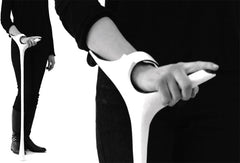 We want to start off the list with the most common mobility aid, the ubiquitous walking cane. Not in production yet, the concept was conjured up by Egle Ugintaite. He won the Fujitsu design award for this concept. In his own words, "‘The Aid is mainly dedicated to help elderly people, or people after trauma who often have a lack of confidence to step outside their house, causing isolation, depression… ‘the aid’ is designed to be a real ‘helping hand': to guide and prevent one from being lost, providing a feeling of security, allowing one to receive immediate help if they need it, and, of course physical support, as a walking cane. an integrated navigator, which works as a service + health device (pulse, blood pressure temperature) features measuring sensors along with an SOS button, which, by pressing it when help is needed, contacts the help center and sends the user’s current health data and location to provide immediate and qualified help. the object is simple to use (2 buttons only), but at the same time smart."
We want to start off the list with the most common mobility aid, the ubiquitous walking cane. Not in production yet, the concept was conjured up by Egle Ugintaite. He won the Fujitsu design award for this concept. In his own words, "‘The Aid is mainly dedicated to help elderly people, or people after trauma who often have a lack of confidence to step outside their house, causing isolation, depression… ‘the aid’ is designed to be a real ‘helping hand': to guide and prevent one from being lost, providing a feeling of security, allowing one to receive immediate help if they need it, and, of course physical support, as a walking cane. an integrated navigator, which works as a service + health device (pulse, blood pressure temperature) features measuring sensors along with an SOS button, which, by pressing it when help is needed, contacts the help center and sends the user’s current health data and location to provide immediate and qualified help. the object is simple to use (2 buttons only), but at the same time smart."
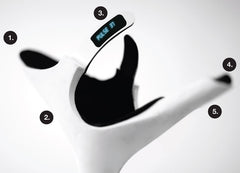
1 – soft component that comes in contact with the user’s arm
2 – sensors on the interior space monitor pulse, blood pressure, body temperature
3 – on the outside of the clasp an LCD screen displays health data
4 – SOS button
5 – cancel button (if SOS button has been pressed by accident)
Even though its not in production, this shows the endless possibilities of innovating even the simplest mobility devices to bring it into the 21st century.
Rollz Motion - Rollator & Wheelchair
The second most commonly used mobility device is the walker/rollator. The Rollz is a 2-in-1 rollator and a push-able wheelchair that's in production and has been available since 2010. Not much different from existing rollators other than it's slick and ergonomics design. It won the Red Dot and iF Design Award 2012.
The Rollz Motion is fold-able and compact. It weighs about 24 lbs and has a weight capacity of ab out 275 lbs. It's unfolded dimensions are approximately 34 x 26 x 25 (H x W x L). The rear wheels are 12 inches in diameter and the models come in four colors: Deep Purple, Orange, Ice Blue, and Cool Grey. One draw back is it's a lot more expensive than your traditional walkers that do pretty much the same thing.
Honda UNI CUB - omni-directional driving wheel system
The UNI-CUB personal mobility device features a compact size, a comfortable saddle, Honda's proprietary balance control technology and the world's first omni-directional driving wheel system (Honda Omni Traction Drive System), which makes possible the same freedom to move forward, backward, laterally and diagonally that people enjoy when walking. This is not a wheelchair, but more like an electric unicycle which has an omni-directional main wheel. Unfortunately, the UNI CUB is still in development and not available to purchase yet.
The Go wheelchair - customized 3D-printed manual wheelchair.
The most common thing that comes to mind when discussing personal mobility is the wheelchair. The basic components of a manual wheelchair have been same over the years. There are many wheelchair design concepts, but we will focus on one in particular. One company (LayerDesign) is customizing almost every part with the use of 3D printers.
LayerLAB is LayerDesign's research division that was founded in 2016. Their inaugural project is the GO wheelchair. It's what they call a, "made to measure" wheelchair that accurately fits the individual's body shape, weight, and disability to reduce injury and increase comfort, flexibility, and support. This is a great application of 3D printing technology that is being utilized. LayerLAB even has a "GO app", that allow users to participate int he design process by specifying optional elements, patterns, and colors.
WHILL Model M - FDA-cleared - Prescription Only
Manual wheelchairs came first but we eventually motorized them. We had previously written about the WHILL Model A, so we will discuss the new FDA-cleared Model M. The Model M seems to be a modified version of the Model A to make it FDA compliant. The differences we notice are the added arm rests and the ability to move the seat forward so that a person getting in and out of the chair can get their footing. This is not possible on the Model A because the footrest plate is static
EZ Lite Cruiser Personal Mobility Aid

A cross between a traditional manual wheelchair that is typically light weight and portable, and an electric powered wheelchair like the WHILL, without the draw backs of it's weight.
Practicality is essential for daily use. If you don't need to get on a car or bus to get from place to place, a heavy electric powered wheelchair could be ideal. But if you need to travel in a car, bus, boat, or even airplane...the EZ Lite Cruiser might be exactly what you need.
The EZ Lite Cruiser is also available with detachable motors which makes it the lightest the portable electric wheelchair on the market today. With this feature, the heaviest piece you'll have to lift up is about 36 lbs.
EZ Lite Cruiser also has a portable fold lift to help you get the device into your personal vehicle.
Toyota i-unit, i-swing, i-REAL
i-road is a new concept in urban mobility. “Toyota i-Road” combines the potential of both cars and motorbikes. Based on the future of urban transport, Toyota has worked to ensure next generation performance in terms of driving, size and environmental performance.
Toyota i-unit Upright position in the low-speed mode. The low-speed mode enables the driver to move at eye level and at the same pace as someone on foot, making it possible for them to hold a conversation as they move. Reclined position in the high-speed mode. The high-speed mode allows the i-unit to be driven in a stable, reclining position with a low center of gravity on regular roads. The styling concept for the i-unit in the high-speed mode is an F1 racecar.
Toyota i-swing
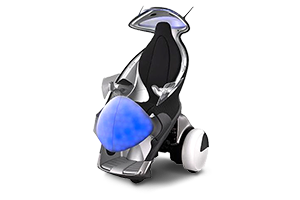
The single-person vehicle package boasts an individual design with a "wearable" feeling. Its low-resistance urethane body is covered in cloth to soften any impact while operating near people, and an LED illumination panel can be customized to display an image to suit your mood.
When traveling in a bustling street full of people, the i-swing can operate in a two-wheeled mode that takes up little space, so that it is possible to travel while keeping pace and talking with someone on foot. When there is a need to move quickly, the i-swing can change to a three-wheeled mode, which is fun to travel in. In addition to the stick control, a pedal control can be used to provide a fresh cornering feeling, as you shift your body weight as if you were on skis.
Toyota i-REAL
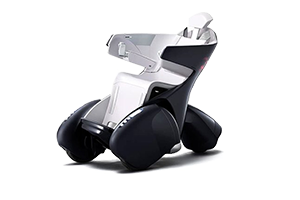 Personal mobility i-REAL was developed to increase opportunities to enjoy a more rewarding lifestyle through more encounters with a variety of people and objects. The really essential functions needed for personal mobility have been conceived and designed based on untrammeled thinking.
Personal mobility i-REAL was developed to increase opportunities to enjoy a more rewarding lifestyle through more encounters with a variety of people and objects. The really essential functions needed for personal mobility have been conceived and designed based on untrammeled thinking.
The TOYOTA i-REAL wheelbase expands and contracts. In pedestrian areas, the wheelbase is shortened, and by adjusting the driver’s eye line with pedestrians a sensation of natural movement is achieved. In traffic areas the wheelbase is lengthened and the center of gravity is lowered to enable higher-speed travel with a sense of stability.
The i-REAL is powered by electricity, and it can travel up to 30km on one charge. The two front wheels move up and down independently in a newly developed synchronized “active lean” mechanism giving optimal control of the vehicle lean angle.
The optimal drive posture can be obtained by adjusting the drive controller. It is also provided with a communications display to view blogs and local information.
SuitX Phoenix Exoskeleton
The Phoenix exoskeleton is the world's lightest and most advanced exoskeleton designed to help people with mobility disorders to be upright and mobile. In the clinic, at home, and in the workplace Phoenix has successfully enabled many individuals to stand up, walk about, and speak to peers eye-to-eye. Phoenix has only two actuators at its hip; the knee joints are designed to allow support during stance and ground clearance during swing.
Major Features:
- A modular exoskeleton allowing the user to independently put on and remove each piece.
- Weighs only 12.25kg (27 lbs), affording greater agility.
- A speed of 1.1 miles/hour (0.5 m/sec) has been clocked by a Phoenix user. However, the maximum speed depends on the individual user.
- On a single charge, Phoenix can walk for 4 hours continuously or 8 hours intermittently.
- Phoenix is adjustable for different size users and can be easily configured to fit individual conditions.
- An intuitive interface makes it easy for users to control standing up, sitting down and walking.
- Phoenix can comfortably be worn while seated in a wheelchair.
HAL by Cyberdyne
HAL® [Hybrid Assistive Limb] is the world‘s first cyborg-type robot, by which a wearer‘s bodily functions can be improved, supported and enhanced.
Wearing of HAL leads to a fusion of “man”, “machine” and “information”. HAL assists a physically challenged person to move and enables him or her to exert bigger motor energy than usual. HAL is also considered as the system that accelerates a motor learning of cerebral nerves.
When a person moves the body, he or she first thinks about the motions in his or her brain. By thinking “I want to walk.” the brain transmits necessary signals to muscles necessary for the motions through nerves. In the healthy body, each muscle is able to receive signals destined from the brain to it and move as strongly and fast as intended. Signals sent to muscles by the brain leak on the skin surface as very faint signals, so called “bio-electric signals [BES]”. HAL® is able to read BES by only attaching the originally developed detectors on the surface on the wearer‘s skin. By consolidating various information, HAL® recognizes what sorts of motions the wearer intends. HAL®, in accordance with the recognized motions, controls its power units.*2 This function enables HAL® to assist the wearer‘s motions as he or she intends and exerts bigger power than he or she ordinarily exerts.
The mechanism to move the human body does not end up with only moving muscles. The brain confirms how the body moved on what sort of signals. When HAL® has appropriately assisted the motions of “walking”, the feeling “I could walk!” is fed back to the brain. By this means, the brain becomes able to learn the way to emit necessary signals for “walking” gradually. This leads to “the important first step” in walking of the physically challenged person without being assisted by HAL®. The only robot that can provide appropriate solutions for motions to the brain is HAL®.
Honda Walking Assist
Supporting people with weakened leg muscles to walk.
Striving to offer the joy of mobility to more people, Honda began research and development of the Honda Walking Assist Device in 1999. As with ASIMO, Honda's humanoid robot, the Honda Walking Assist Device adopts cooperative control technology that was developed based on Honda's cumulative study of human walking.
The Walking Assist Device features a function to influence the user to achieve efficient walking based on the inverted pendulum model, which is a theory of bipedal walking, and is designed as a device to be used in the training of walking.
REX Bionics
Custom built for the individual, REX P opens up a world of social, recreational and work opportunities as your mobility is enhanced.
REX P is completely self-supporting, giving you the freedom to use your hands, whilst remaining stable and balanced. We understand that, for wheelchair users, protecting the health of your shoulders is important, as is the ability to use your hands, which is why REX® is designed to allow hands-free standing and walking*
*Please note that REX P is not registered with the US FDA and is not available for sale within the USA.
ReWalk Personal 6.0
The new ReWalk Personal 6.0 System is designed for all day use at home and in the community. It is a customizable exoskeleton and is configured specifically for you. This precise fit optimizes safety, function and joint alignment.
ReWalk is the most researched exoskeleton. The battery-powered system features a light, wearable exoskeleton with motors at the hip and knee joints. The ReWalker controls movement using subtle changes in his/her center of gravity. A forward tilt of the upper body is sensed by the system, which initiates the first step. Repeated body shifting generates a sequence of steps which mimics a functional natural gait of the legs.
ReWalk offers assistance seeking reimbursement for your personal system and a comprehensive maintenance and warranty program after you take it home.
INDEGO lower limb exoskeleton
Indego Personal offers users with spinal cord injury a new level of independence at home and in the community. At just 26 pounds, Indego’s elegant design has no exposed cables or upper-body apparatus and does not require bulky backpack mounted components. Indego Personal offers people with mobility impairments a new level of independence. Designed for personal use, Indego offers features that set it apart as a tool for personal mobility for those with spinal cord injuries.
Future advancements will enable use with a wide array of partial mobility impairments, pending regulatory approval.
Mirroring natural human movement, lean forward to initiate standing or walking and lean backward to stop and sit.
An Indego app on your mobile device allows you to control operation, change settings, and capture data without the need for tethered controls.
Indego Personal allows personal mobility on a variety of surfaces both indoors and outdoors and can even be worn while sitting in a car.
With up to four hours of continuous use, a fast charging battery allows for extended use at home and in the community.
EKso GT robotic exoskeleton
Ekso Bionics Ekso GT™ robotic exoskeleton is a comprehensive gait therapy tool which provides an unparalleled rehabilitation experience for patients and therapists alike.
Ekso GT enables functional based, intensive, over ground gait training and is designed to support the re-learning of correct step patterns and weight shifts, potentially mitigating compensatory behaviors.
Variable Assist™ our adaptive or “smart” software, dynamically provides 0-100% power to either side of the body and promotes a greater number of high-quality steps in a shorter time period for a broad spectrum of patients.
Variable Assist is the only software feature commercially available that allows clinicians to dynamically augment their patients’ strength and to strategically target deficient aspects of their gait while the patient walks. It engages patients by challenging their abilities, balancing the physical effort they exert with the amount of help they need to achieve a more normalized gait.
Well, that's it for now. We'll be on the look out for more, and bring them to you in our blog when we come across something noteworthy.
No one knows what the future will bring. Even something like this hybrid robotic suit and segway could be just around the corner, but innovation is always happening.


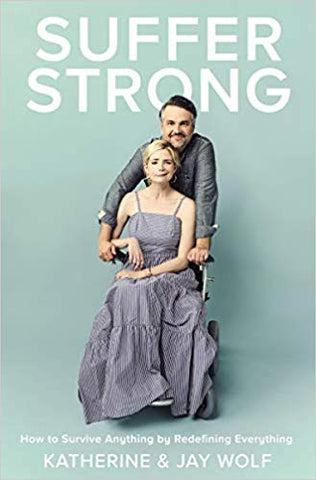
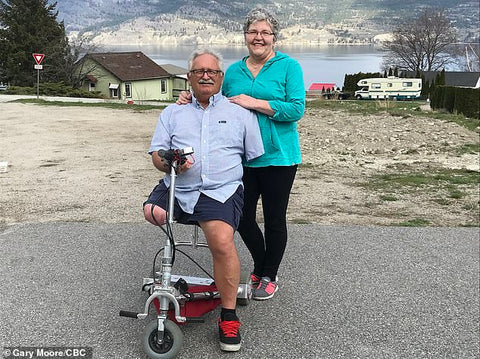
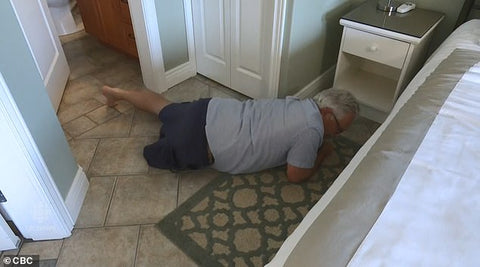
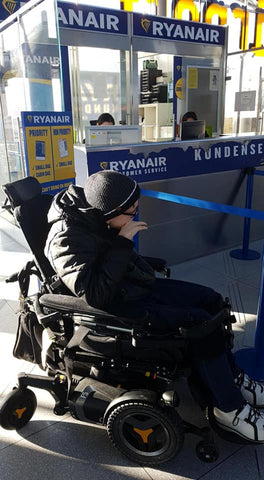



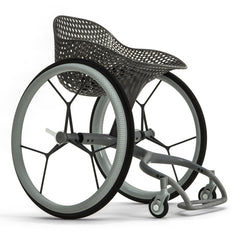


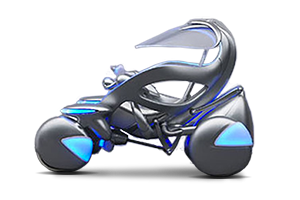

 Personal mobility i-REAL was developed to increase opportunities to enjoy a more rewarding lifestyle through more encounters with a variety of people and objects. The really essential functions needed for personal mobility have been conceived and designed based on untrammeled thinking.
Personal mobility i-REAL was developed to increase opportunities to enjoy a more rewarding lifestyle through more encounters with a variety of people and objects. The really essential functions needed for personal mobility have been conceived and designed based on untrammeled thinking.